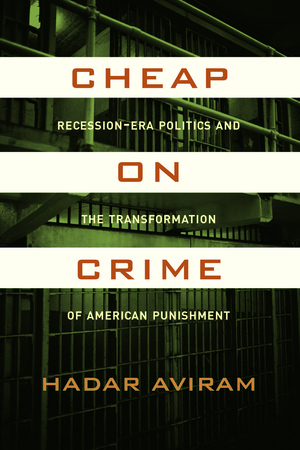By Hadar Aviram, author of Yesterday’s Monsters: The Manson Family Cases and the Illusion of Parole
You’ve probably heard these words everywhere in the last few weeks: “We are all in the same storm, but not in the same boat.”
These are desperate, scary times for all of us. Consider the misery and uncertainty outside prison, and then try to imagine what pandemic life is like within our prisons.
The California Department of Correction and Rehabilitation (CDCR) is responsible for the lives and welfare of close to 120,000 prisoners and thousands of employees. With increasing numbers of staff members testing positive for COVID-19, massive contagion behind bars can be a frightening concept. And yet, we have released only 3,500 prisoners so far—a miniscule number given what we might be facing. Efforts to save thousands of lives have so far failed, first when a three-judge panel denied relief for procedural reasons and then before a federal district court. In addition, I see headlines bemoaning the fact that among those released are people originally convicted for murder.
In my first book, Cheap on Crime, and elsewhere, I described how the post-recession efforts to shrink the prison population targeted only nonviolent people. Reformers understandably thought that such reforms would be more palatable to the public. I’m noticing similar patterns now, with topsy-turvy notions of who should be released. As this excellent Prison Policy report explains, the problem with targeting only so-called “nonviolent” inmates is that these kind of reforms ignore the majority of people in prison, who are doing time for violent crime.
Contrary to public perception, people sentenced to prison for violent crime are not necessarily more violent, more dangerous, or more likely to reoffend. Here’s what they are: aging and infirm. Sentences for violent crimes are much longer, which means these people tend to be older and consequently have far lower risk of reoffending. Additionally, spending decades in a hotbed of contagion with poor food and poor exercise options leads to poor health. Not long ago, Supreme Court Justices were horrified to learn that an inmate dies every six days of a preventable disease.
Why is the state reluctant to release people who are aging, sick, and more likely to contract a serious disease that will cause more suffering and cost more money?
It may be because of a deep ignorance about the remarkably low risk these people pose to public safety. Or, it may be because our state officials (and some of us) think of these releases not as an essential step to protect public health, but as a “reward” for moral worthiness.
The correctional system’s obtuseness in the face of aging and illness is not new. In my new book Yesterday’s Monsters, I describe the 2009 parole hearing for Susan Atkins, one of the Manson Family members who participated in the murder of Sharon Tate and her friends in 1969. Forty years later, Atkins was in her early sixties and ravaged by an inoperable brain tumor. A devout Christian with a clean disciplinary record for decades, she was wheeled into her hearing on a gurney. Her husband of 17 years, lawyer James Whitehouse, was representing her in an attempt to allow her to spend the last few months of life by his side.
The Parole Commissioners’ treatment of the case was shocking. They started by offering the barely conscious Atkins a hearing aid (as if she could hear them), then analyzed old psychological reports from her file, and addressed her educational and rehabilitation “prospect.” They even mocked her husband for being able to afford palliative care for his wife.
Understandably incensed by this mistreatment, Whitehouse exploded:
“For the record, she’s lying in her gurney here. She is paralyzed in over 85 percent of her body. She can move her head up and down. She can move it to the side. She used to have partial use of her left arm, partial limited use, meaning she can’t wave to you. She can’t give you a thumbs up. She no longer can point at you, I believe. She can’t snap her fingers. And this is the evidence. . . . We haven’t been able to get her in a wheelchair for well over a year. Permanent speech impairment—“does not communicate, speaking or writing”—complex medical needs, assistance needed eating, bathing, grooming, moving, cleaning, permanent speech and comprehension impairment due to underlying medical problems. . . . That’s the only evidence regarding her medical condition. And all those things have to do with what we are supposed to be looking for the future of behavior. In light of that, is there anything that her commitment offense has to do that’s probative to what she’s going to be doing in the future as far as you know? That’s a question.”
The Parole Board refused to release Atkins, arguing that “these Manson killings and the rampage that went on is almost iconic and they have the ability to influence many other people, and she still has that ability as part of that group.”
Atkins died alone in prison a few months later.
I see the distressing inhumanity at Susan Atkins’ hearing echoed in the state’s reluctance to release more people to prevent COVID-19 deaths. A quarter of the prisoners in California are doing time for violent crimes, which in many cases were committed decades ago. They are aging, sick, and at grave risk of contagion because CDCR has very little capacity to protect them. And while the newspapers have alarmed us about the lack of testing done before the 3,500 prisoners were released, they have not highlighted the much more threatening fact: prison staff go in and out of prison on a daily basis. Incubating this dangerous disease in our prisons is not only a risk to our fellow humans behind bars, but to all of us.


